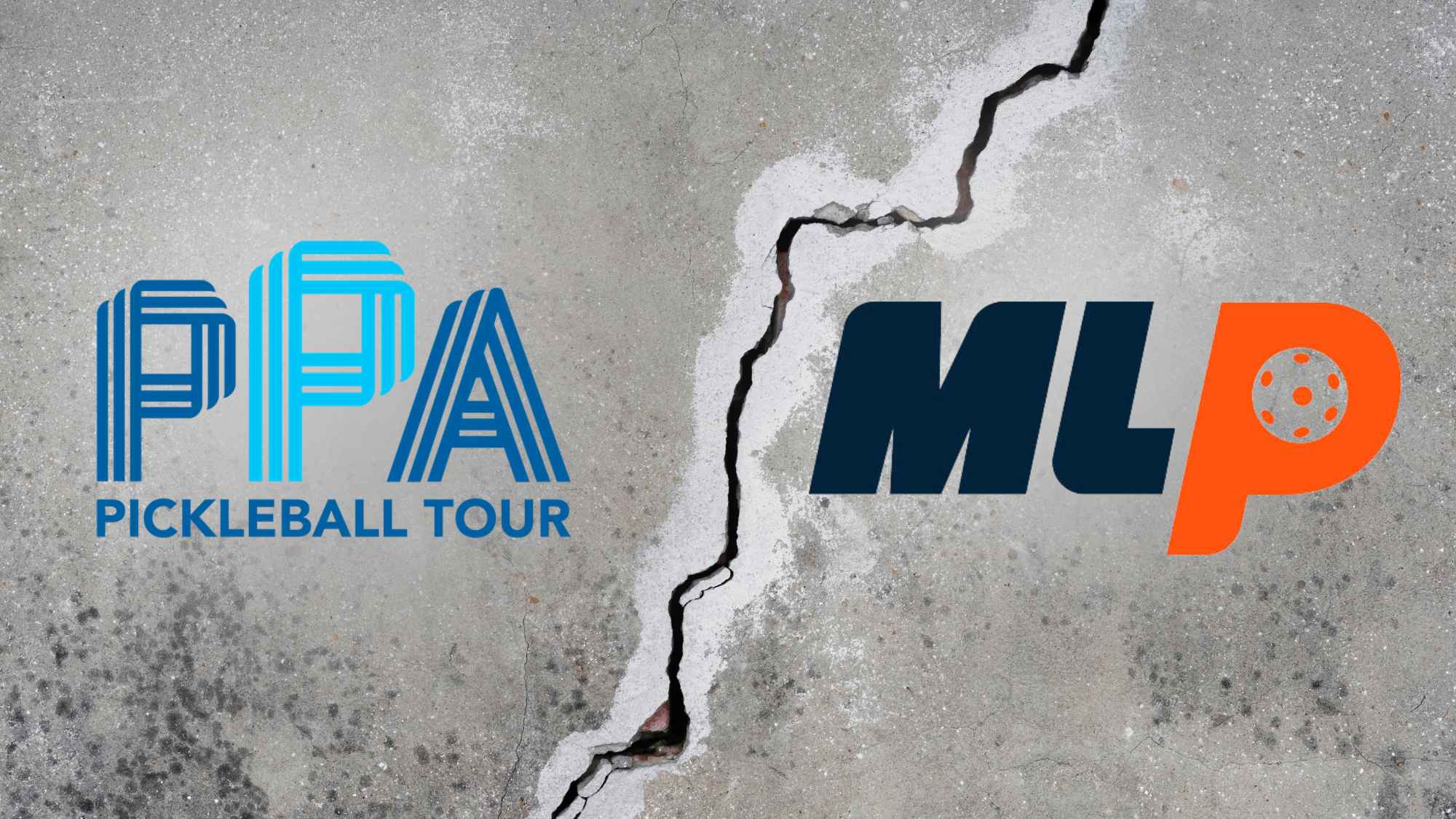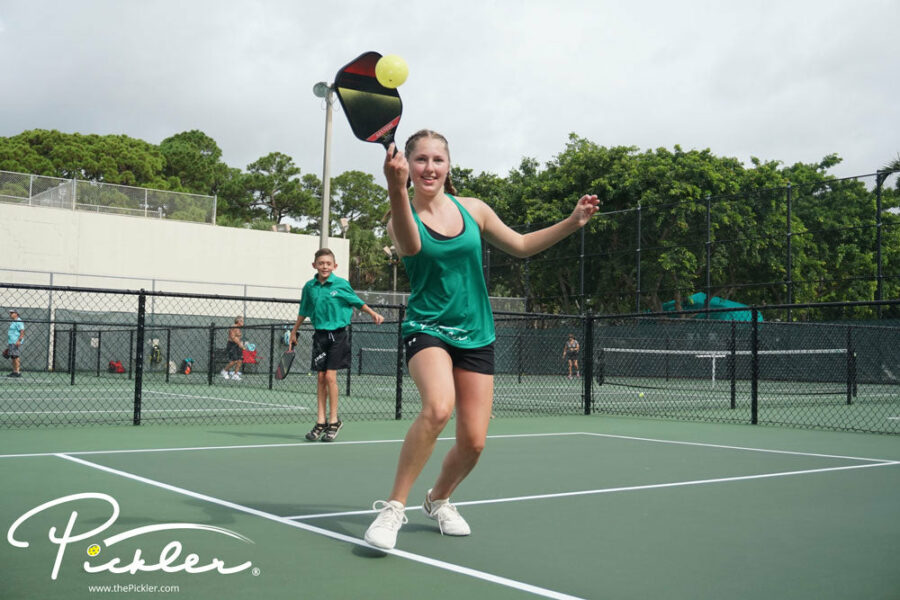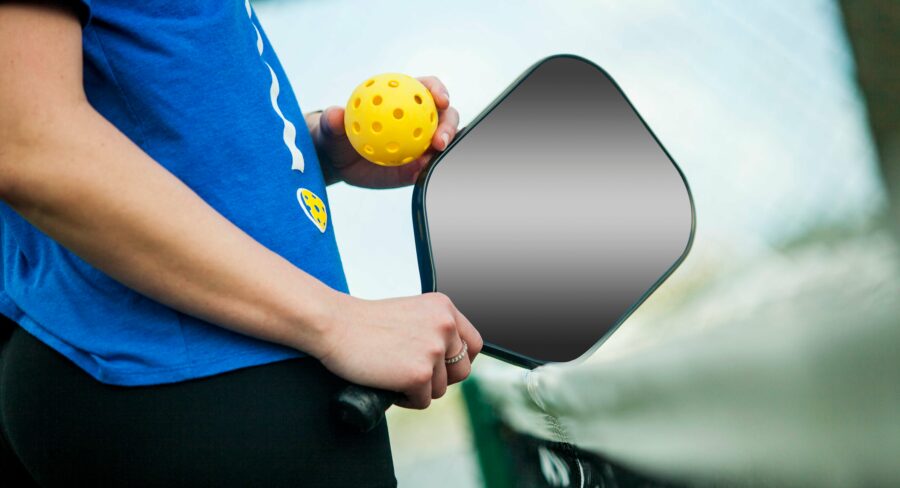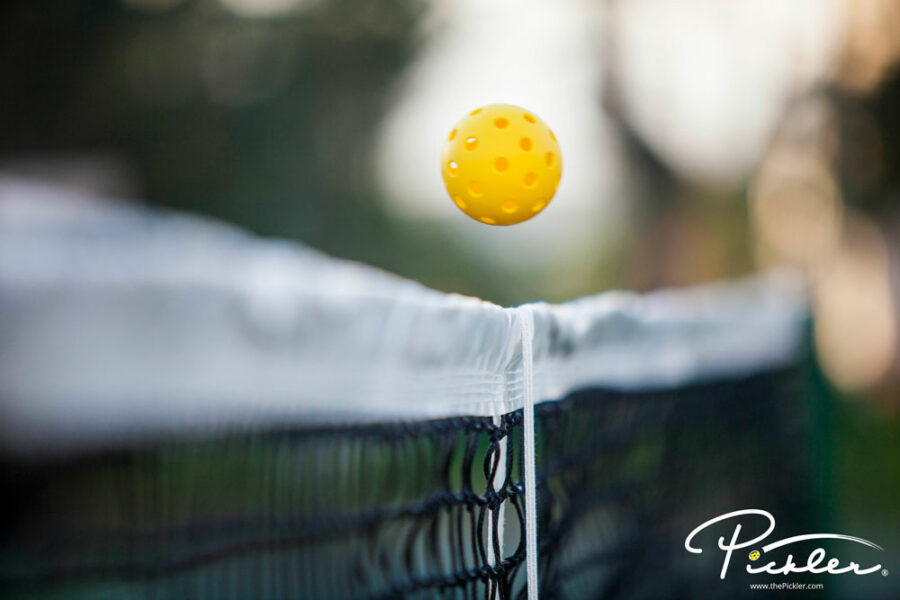What is happening in pro pickleball?!
In one word: Chaos.
In a few words: The tentative merger negotiated in 2022 between two major entities in professional pickleball—the Professional Pickleball Association (PPA) and Major League Pickleball (MLP)—has fallen apart in dramatic fashion, as MLP founder Steve Kuhn surprised the PPA by offering top pro players multi-year contracts with six- and seven-figure guaranteed salaries (plus, health insurance and other benefits, like a 401(k) plan and an offseason) to exclusively play with the MLP (i.e., not to play on the PPA Tour). A bidding war over top talent ensued, forcing pro pickleball players to make quick decisions and choose alliances. While this “tour war” has provided financial security for pro players, it has also led to uncertainty, upheaval, and rifts in the industry.
Breaking it down further (based on my own perspective from the outside):
- Why MLP Made this Move. Reading between the lines, this move by Major League Pickleball—which has been called a “coup”—seems to boil down to a few “hot button” issues. These seem to include:
- Battling with the PPA Tour over control of the schedule – Rumors circulated that the PPA Tour would have 30 or so events next year, while MLP would have 6 to 8 events. The control over the schedule by the PPA would mean that the PPA would also have control over the content in pro pickleball—and “content is king” in this business. To add to MLP’s frustration with having less than an equal share of the pro calendar, MLP was paying the pro players more per day than the PPA Tour. The PPA seemed to be able to have the upper hand on the schedule because, at that point, the PPA had the contractual relationships with the pro players (which included exclusivity to the PPA Tour).
- Fundamental differences on what is the “right” vision for the future of pickleball – The PPA Tour is similar to the ATP Tour in tennis or other major tennis events, where players compete individually or with a partner of their choosing in doubles. As a result, the PPA views the sport of pickleball in this “individual” regard, where there is a model to fight to be the best player in the world (with a clear pathway to a #1 spot). On the other hand, Major League Pickleball has a team-based model, where they see the future of the sport as being played in teams (like the NFL, NBA, MLB, NHL, etc.) with rally scoring (rather than traditional side-out scoring). There will be stars in the league—just like in other sports—but the individuals play on teams and the teams win or lose. To elaborate further on the MLP team concept, the MLP wants to adopt a European football (aka soccer) model, where there are development programs, salary minimums and maximums with free agency for players, promotion and relegation systems for teams to move up and down, and home and away schedules where teams play in their hometown or travel for away matches (which would lean into the grassroots community of pickleball). This is a stark difference on the vision and future model for the sport to thrive (with each respective organization believing that their model is the “best” or “right” for the sport).
- Paying the pro players and shifting the leverage – Until this point in time, many pro players did not have a steady paycheck or health insurance. They lived paycheck to paycheck, hoping that their hard work would pay off. MLP founder Steve Kuhn believed in doing what he thought was best for the players and best for the sport, which was treating and paying the pro players like true professional athletes. It has been noted that MLP asked the PPA to join them in paying the pro players more, but the PPA stated that the pro players were already paid too much. As a result, MLP pushed on to guarantee pro players unheard of sums and salaries that range from six- to seven-figures per year, plus health insurance, 401(k) plans, and a dedicated offseason (where players could recover from the grind of playing). This kind of payment and consideration to the players does not come without a quid pro quo, which is that the pro players would be exclusive to MLP and not the PPA Tour (to note, MLP even seemed to promise to pay any liquidated damages that any pro players may face in breaking their respective contracts with the PPA). As a result, this shifted the leverage from the PPA having the upper hand, to now MLP being able to control their own schedule (and, as a result, increase their ability to produce content). And, interestingly, MLP took a page out of the PPA’s playbook, who just a year or so earlier had tied up the pro players to exclusive contracts at the expense of MLP and the APP Tour (yet another tour organization in the sport).
- Answering to investors – MLP (just like the PPA) is a for-profit business, with stakeholders—notably, investors—to answer to. And, MLP is becoming “big business.” As a reminder, there are 24 teams (each reportedly worth $10 million), plus the overarching organization (i.e., MLP itself) and MLP’s related businesses, which include DUPR (a pickleball rating system), Minor League Pickleball (a format for pickleball play and events), merchandise (e.g., team merchandise), and even the new Pickle Mall concept opening across the United States (to note, although these indoor facilities may not be directly related to MLP or in the MLP structure, Steve Kuhn is actively involved). This is quite the business structure to support, which MLP’s success is a crucial component of. The decision to lock-up pro players and fuel the pro industry feeds into this larger pickleball organization (and vice versa). Not to mention, MLP’s decision to stage the “coup” against the PPA came just days after the PPA announced that it was the first professional pickleball organization to enter the betting/gambling market. With betting/gambling being a multi-billion-dollar industry, it is hard not to question whether that added anything to the mix (especially because gambling is such an integral component to the DUPR business model).
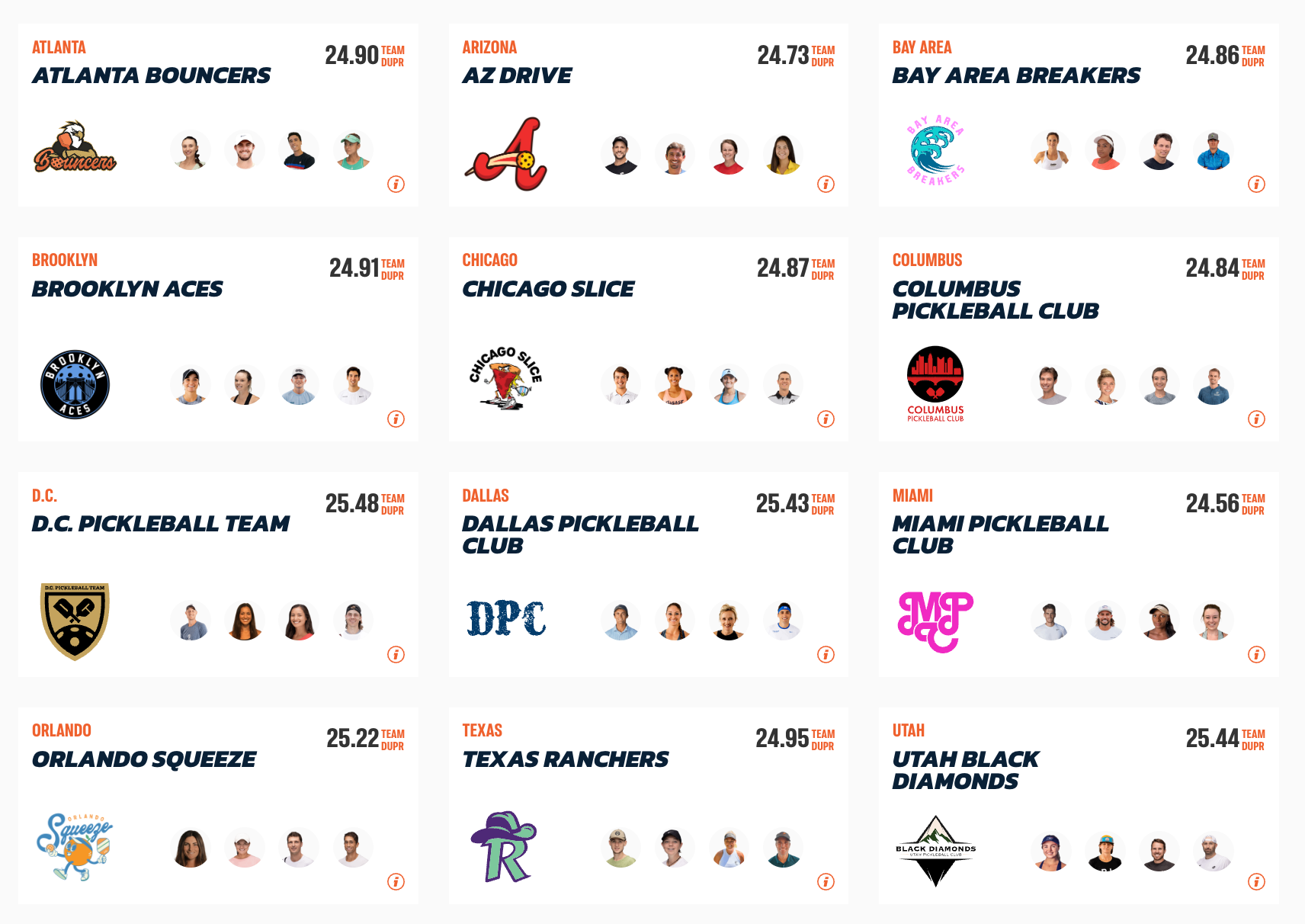
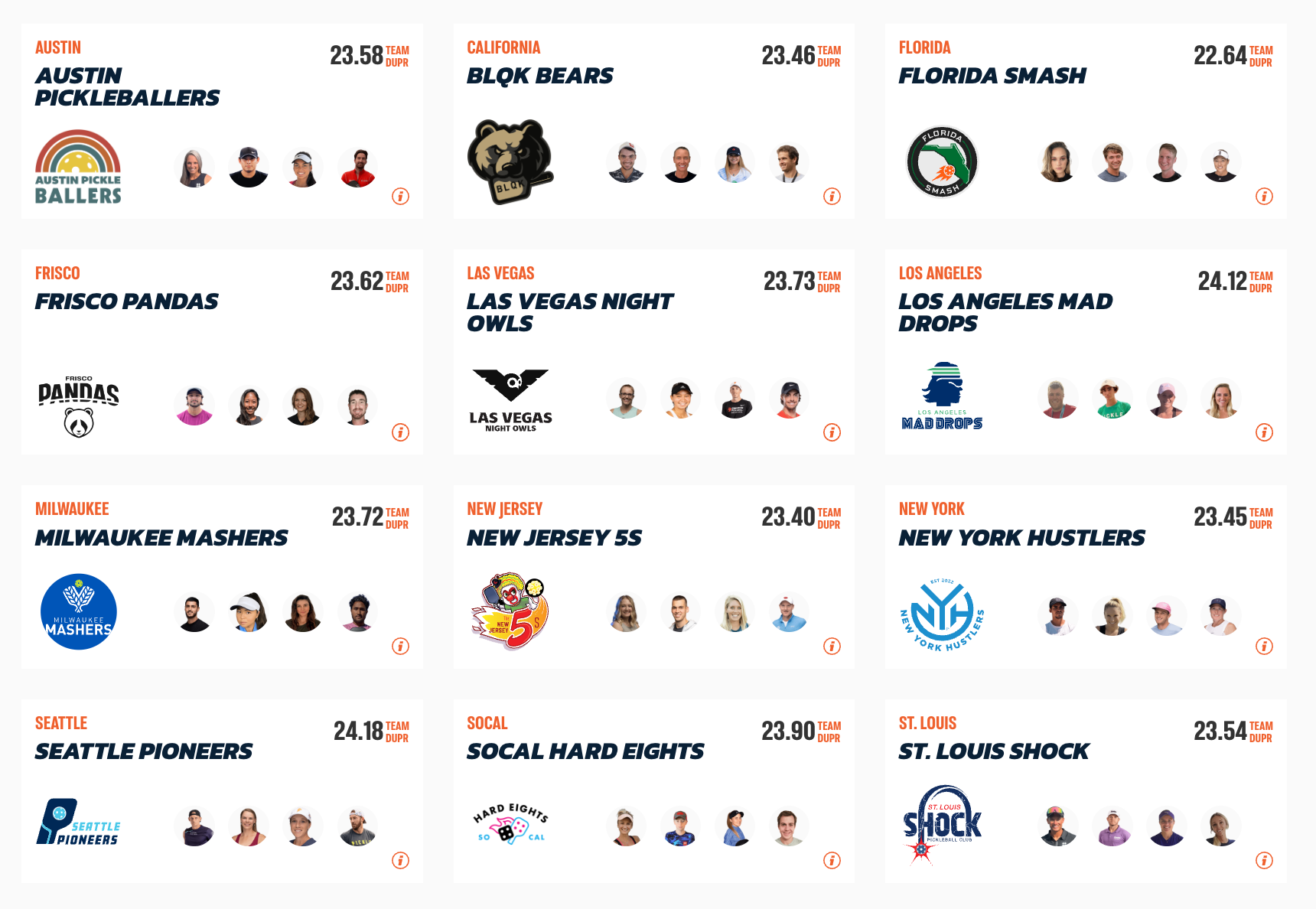
Major League Pickleball
- A Few Notes on the Interesting Series of Events. MLP wasn’t able to orchestrate this move to secure contracts with pro players on its own. Pro players were involved. Agents were involved. Families were asked for their opinions. Business people spoke and negotiated (although, to note, team owners in the MLP were left in the dark because these team owners included the ownership of the PPA). Many people were “at the table.” So, the fact that MLP was able to keep this confidential until lining up all of their dominoes was pretty incredible, especially because pickleball—more specifically, pro pickleball—is such a small circle. With that said, there were some curious and/or incredulous series of events that played out in advance of the news breaking on the player contracts and during the chaos of the scramble once the new broke:
- A crucial link? – Topnotch Management—a boutique sports agency—represents about 20 or more of the top pickleball pros. Topnotch was at the forefront of the negotiations with MLP, where MLP could make a deal with a large group of the top talent that included one of the most recognizable names in the sport, Tyson McGuffin (also deemed by Barstool Sports as the Most Electrifying Man in Sports). What is particularly interesting about the dynamic, though, is that Topnotch recently hired the PPA Tour’s employee responsible for player relationships in Sam Flaxman. Flaxman’s title with Topnotch is a Strategic Advisor for pickleball. But, even further, Flaxman also recently became a board member on the non-profit organization Pickleball Cares [LINK: https://viola-owl-dhy6.squarespace.com/about]. The chair of the board is none other than Steve Kuhn (and, to note, other board members include notable MLP advisors and supporters). As a result, from the outside looking in, Flaxman seems to be a crucial piece to the puzzle that connects pro players, Topnotch, and MLP (along with maybe a sprinkling of information into the workings of the PPA).
- Pardoe scrambles to save his business – Prior to the news breaking, Connor Pardoe, the founder and CEO for the PPA, speculated that something was amuck because the MLP team would not return his messages or calls. Then, on the night before a PPA event in Kansas City, Pardoe, who was not in-person at the event, learned that MLP was offering players an opportunity that would be hard to turn down (i.e., “money talks”). As Pardoe told Yahoo Sports, he “ran straight to the airport, no bag, no cell phone charger, no toothbrush, no clothes… [he] tried to save [his] business.” What ensued was chaos in Kansas City, as pro players huddled in corners in hushed voices, scrambled to phone calls between matches, and were too distracted to focus on anything related to their on-court performance on.
- Social media frenzy – Then, the announcements of player decisions started to hit social media. One after another, “signed” postings populated feeds. As pro pickleball player Anna Bright described it, a “dopamine rush” followed every new announcement. Pro players, insiders, and fans alike anxiously refreshed their feeds to see where players decided to commit—which even included some players (like Riley Newman and Altaf Merchant) initially “signing” with the PPA to only be deleted and reappear as “signing” with MLP. Further, some of the biggest “winners” in the negotiation amongst players and the pro tours/leagues were some of the biggest holdouts that banned together as a group and had the ability to swing the pendulum further in MLP’s favor in terms of numbers—specifically, “the squad” that was made up of a group of five young players in JW Johnson, Jorja Johnson, Dylan Frazier, Gabriel Tardio, and Milan Rane. To note, as the dust settled, the current numbers tally at almost 100 pro players for MLP, compared to around 50 for the PPA. However, the numbers do not tell the entire story, as quality of players is also important. The PPA Tour still has the undisputed top talent in the sport—specifically, #1 players Ben Johns and Anna Leigh Waters. However, they also signed a handful of relatively unknown players in the pickleball pro sphere and have pivoted to recruiting top tennis talent, headlined by Jack Sock (who just retired from tennis). On the other hand, MLP signed the lion share of the pro pickleball players currently on tour.
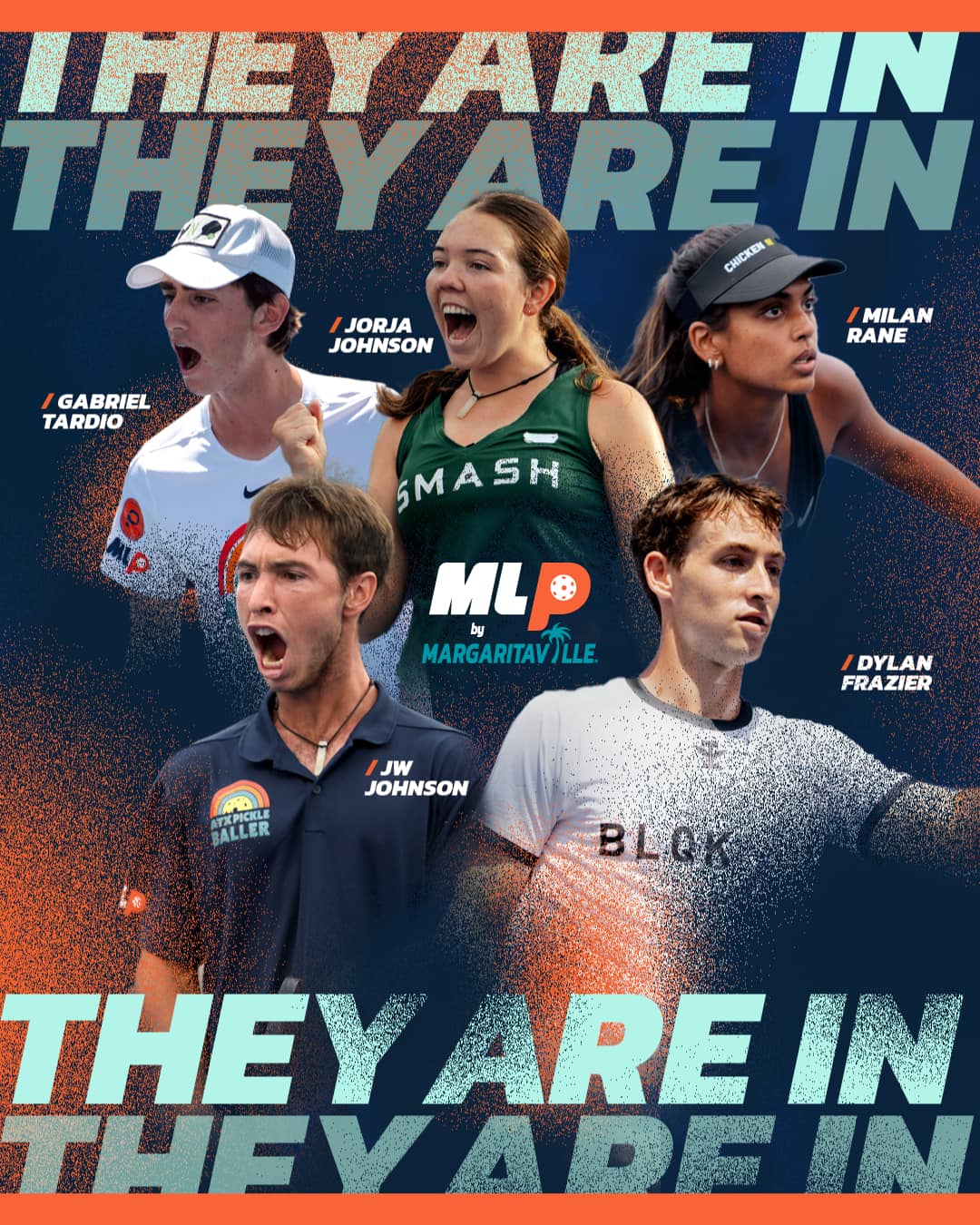
Major League Pickleball
- Divided decision? – There are also rumors that not everyone in MLP’s organization agreed with the decision to blindside the PPA and sign players to these historic deals. As a result, movement within the MLP organization could be on the horizon (if it hasn’t happened already).
With that said, one of the biggest questions in this series of events is where is the money coming from? With 100 or so signed pro players—some making six figures, and some making seven figures, per year—MLP has agreed to millions of dollars to pay players. This is incredible for the pro players, but will be interesting to see where the money comes from to fund these salaries. On top of these salaries, MLP also has to cover expenses for the event space, marketing, other employees and administration, broadcast rights, and so on. Will MLP be in a position to achieve a return on the millions that they will be pouring into their events? Will MLP be able to secure sponsorships, broadcast deals, licensing deals, etc. and become profitable—something that is unlikely to be a reality to date, let alone when MLP must pay out on these new deals? MLP is seemingly seeing these deals as an investment of something to come in the future.
- Thoughts Related to the PPA Point of View. A few thoughts related to the PPA camp in this saga:
- The PPA model favored the sport’s best players – As alluded to above, the PPA also believes that their model is what is “right” for the sport of pickleball. The PPA is pushing the traditional tournament model that is individual based and has a clear path to determine the very best players in the sport overall. The PPA model rewards these top players and the PPA has made decisions to continue to reward the top players. For instance, the PPA has a reputation for focusing on the pro draws and less so on the amateur draws, and the PPA has been known to be “top heavy” in terms of financial rewards. Further, the PPA has largely eliminated the back draw in pro events, which has the effect of favoring the current top players, as newcomers have less ability to gain high-level tournament experience, and has chosen not to reward PPA points to players that are not signed with the PPA (which results in inaccurate seeds, as rising talent like Hurricane Tyra Black is unable to gain a strong seed despite her strong finishes). These decisions have benefited the game’s best talent—notably, Anna Leigh Waters and Ben Johns—who have worked hard to claim their well-deserved #1 spots. With that said, the PPA’s decisions have served them well in avoiding any defection by their stars in Waters and Johns, as both decided to remain loyal to the PPA despite the huge amounts of cash being offered by MLP (along with other top talent like Catherine Parenteau, Matt Wright, Lucy Kovalova, Tyler Loong, Callie Smith, and Jay Devilliers, among others). These top players have generally noted that the PPA have treated them well over the years when discussing their decision to remain loyal to the PPA.
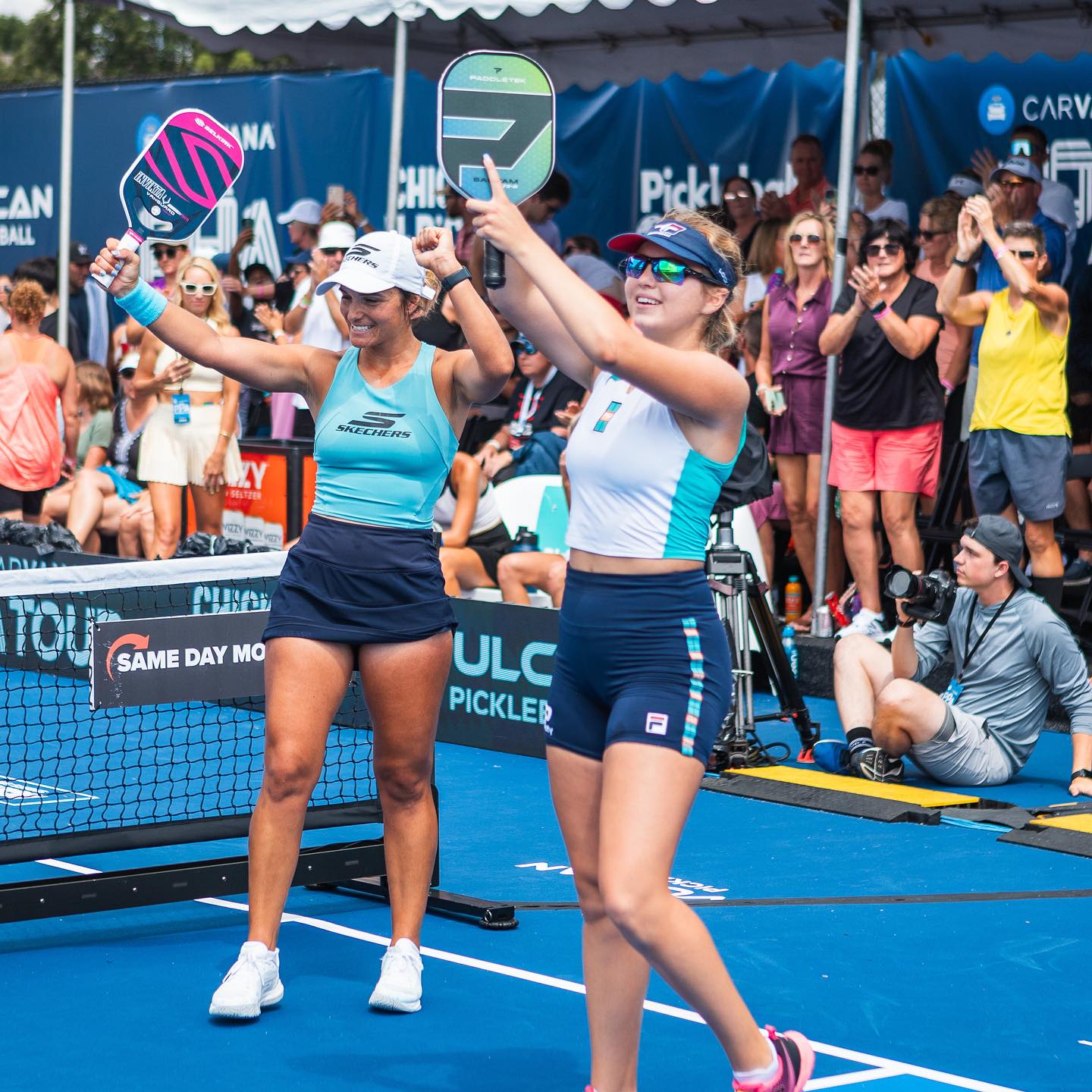
PPA Tour
- Easy way out? – Some critics of the pro players that signed with MLP have said that it is an “easy way out” for those players that simply cannot beat #1 players Anna Leigh Waters and Ben Johns. On the other hand, the MLP deal is certainly a guaranteed way to cash out and have some financial security. But, it does seem as if Waters and Johns are harmed on some level for being so dominant in their field and cleaning up in terms of winnings, as the majority of players left to join a more “wide open field.”
- Past performance affects player decisions – In an effort to hit back at MLP, the PPA went on a recruiting rampage of its own—matching contracts, talking to players, negotiating with agents, etc. As alluded to by Pardoe, the PPA did everything they could to “save their business.” However, not only was the PPA on their backfoot because of the blindside by MLP, but the PPA was also on their backfoot, as many pro players (outside of the top talent described above) felt undervalued. For instance, longtime pro Kyle Yates noted to Yahoo Sports that the PPA would not return his calls since the initial flurry of contracts with the PPA were signed. Plus, he even had to pay registration fees to play PPA events. On the other hand, Yates felt a stronger relationship with MLP and had a deeper level of trust and belief that MLP would follow through on their promises. This was echoed by other players, who even stated that they were owed money by the PPA.
- Potential loss of millions in the dead deal – Rumor has it that the original memorandum of understanding regarding the merger between the PPA and MLP gave the PPA ownership in four MLP teams, plus a 20% stake in MLP. If that is true, the fallout between the two organizations has potentially cost the PPA somewhere between $50 million and $100 million in value. MLP may have noticed this, too, and decided to keep their ownership and simply pay the players, rather than the PPA.
- Dundon’s bigger picture – Similar to MLP, the PPA is just one piece of a larger vision. The PPA is backed by billionaire Tom Dundon, who also has stakes in PickleballCentral (top pickleball retailer), PickleballTournaments.com and PickleballBrackets.com (top pickleball tournament software), and pickleball.com (a central website that pulls these entities to one common location). The PPA is seemingly a loss leader for this pickleball organization, in order to promote the sport and pull additional customers into the fold (and with the hopes that pro pickleball will eventually be able to sustain itself with larger sponsorship and broadcast deals). And, now, the PPA will be even more expensive to operate, as the PPA has had to put up even more money for the pros to compete with MLP in terms of contract value. With that said, the PPA may be in a better position to fund these additional costs, as these other entities—specifically PickleballCentral—throw off millions in profits that can be shifted to the PPA expenses.
- Moving Forward. Looking forward, here are some things and moves to think about:
- Good for players, bad for fans – This series of events in pro pickleball is widely regarded as good for the players, but bad for the fans. The players are getting paid a steady, guaranteed paycheck, which means they can focus in and hone their craft—potentially elevating the on-court play even further. However, this series of events has split the talent pool between MLP and the PPA. The viewership will suffer, as fans’ eyeballs may be split between to the two organizations and, unfortunately, the fans will likely lose out on seeing the world’s best players compete against each other. Further, the fans and public at large will now need to discern between two completely different models with different scoring systems, which can be confusing when trying to educate the public and draw them into the sport.
- What happens in the short term? – This question remains unanswered. The next PPA Tour stop is in Cincinnati, Ohio, starting on Thursday, September 7th, which may answer the first question of whether players that signed with MLP will be able to play on the PPA Tour for the remainder of the year. The next MLP event occurs after the PPA Tour stop, which is in Atlanta, Georgia, starting on Thursday, September 21st. MLP has made it known that they expect all players (including the PPA-committed players) to participate through the remainder of the year. If not, MLP will have to race to re-draft for all teams involved. The first test may be Tuesday, September 5th, when MLP’s Chicago Slice—which, notably, drafted Ben Johns (PPA signed player) to their team—are to play an exhibition outside the Chicago Cubs stadium. This will play out quickly…
- It’s a VIBE – In response to the terminated deal, the PPA quickly reinvigorated VIBE Pickleball. VIBE Pickleball is a team-oriented pickleball league that is in direct competition with MLP and under the control of the PPA. The PPA will sell teams and draft players, just like MLP. Further, with billionaire Tom Dundon involved, the PPA will likely be able to match MLP in terms of star and celebrity ownership (and it already has ties to celebrity entrepreneur Mark Cuban, among others), as well as star power on the pickleball court with the likes of Anna Leigh Waters and Ben Johns. With that said, the first time VIBE Pickleball was created, it seemed to be a negotiation tactic to gain leverage over MLP. Now, as VIBE Pickleball is reinvigorated, it seems less likely that VIBE Pickleball is simply a negotiation tactic and more likely that VIBE Pickleball will be an actual competitor, competing on notoriety, relevancy, level of play, and revenues (including merchandise, which the PPA organization has an advantage in with PickleballCentral in the mix (and who has even recently released two paddle brands owned and “crafted by” PickleballCentral)).
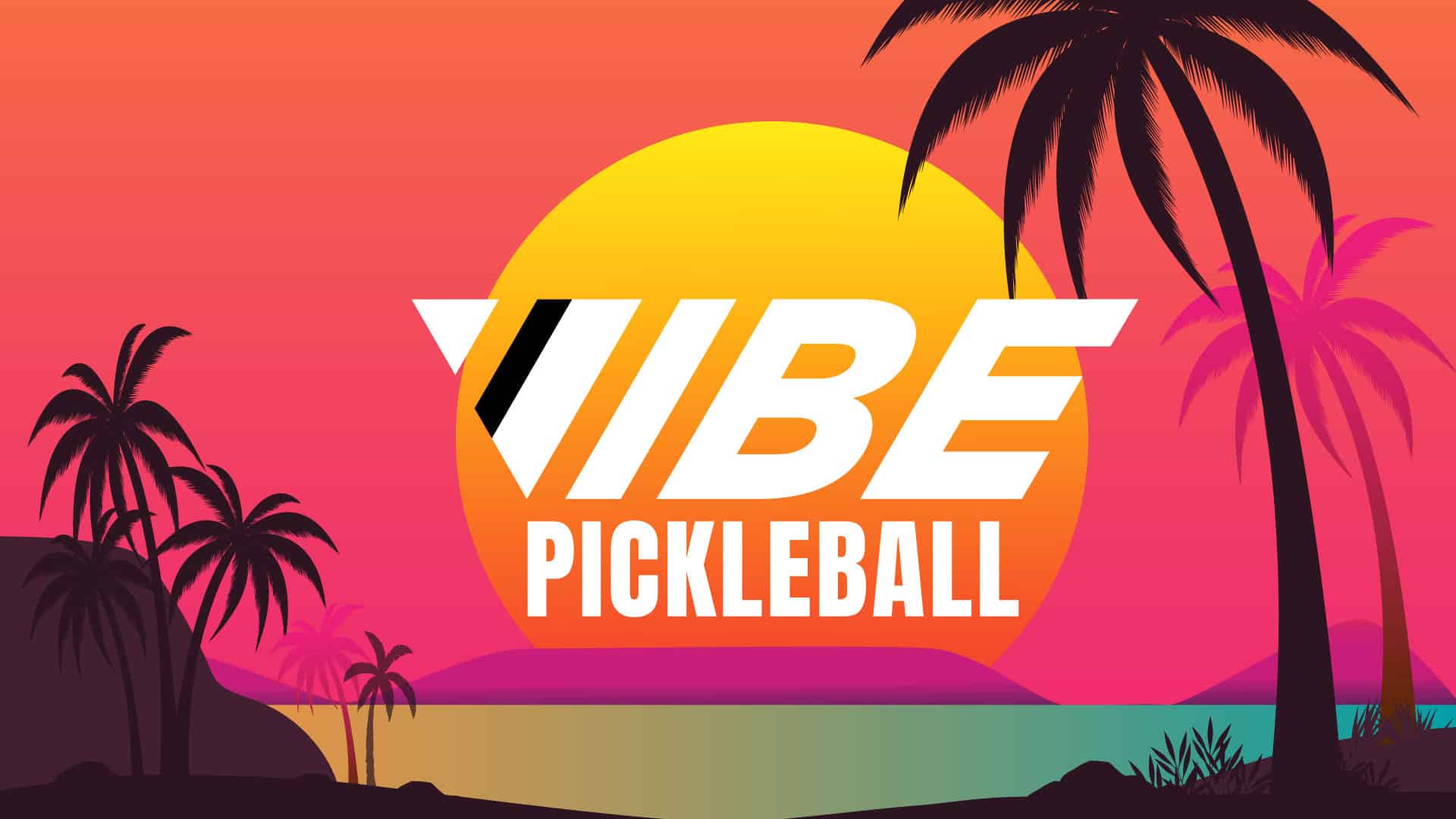
PPA Tour
- The devil is in the details – Like any contract, the devil is in the details. The same is true for the PPA and MLP contracts. It has been reported that the PPA contract is only a letter of intent, which is non-binding, but ties up the players for ten days in order to negotiate a more fulsome agreement. In contrast, the MLP contracts were fully flushed out, binding contracts with three-year terms. As a result, PPA-signed players could flip in the near term if the PPA and the respective players cannot come to final terms. Even further, these contracts are likely many pages upon many pages long, with infinite details and provisions that spell out what happens in various circumstances. For instance, pro player Maggie Remynse hinted via X (aka Twitter) that both sets of contracts have change of control provisions, which void the respective contract in the event of a change of ownership. If true, players must consider whether they envision a change of ownership in the near term and how that impacts their decision making. This is just one example of the extent of terms that these pro players must factor in and negotiate, which could weigh on their decision of whether to finalize agreements with either side.
- This is far from over… – Some onlookers have declared that MLP has “won” over the PPA, as they have the numbers in terms of pro players and have achieved a critical mass. These onlookers go on to note that the PPA has little or no entertainment value now, as Ben Johns and Anna Leigh Waters have relatively little competition with so many players signing to MLP. As a result, week-in and week-out, the same match-ups will be played. However, I do not think that it is that easy to declare a winner and loser, and I think that this saga is far from over. This is because (1) the PPA still has the undisputed best talent in the sport; (2) the PPA has already faced the same issue of the same storylines with Johns and Waters consistently winning events and rarely losing (i.e., so have the entertainment issues really changed that much?); (3) the PPA has gotten creative in recruiting tennis players to their line-up, which has already proven to be successful, as the most popular pickleball broadcast to date did not even feature a pro pickleball player (and featured tennis superstars John McEnroe, Andre Agassi, Michael Chang, and Andy Roddick) (to note, on the flip side, many of the tennis talent crossing over are unknowns and could have some trouble with the transition to pickleball, like Sam Querrey or Noah Rubin); (4) with so much money being funneled into the sport to pro players, more and more talented hopefuls will enter the game, which will only help to solve the PPA Tour’s problem of empty brackets (although it may take some extra time to fill the women’s brackets, which have been slimmer than the men’s brackets and are now only slimmer with so many female pros signing with MLP); and (5) the PPA already has a leg-up in terms of building out the model and will have the ability to stand up VIBE Pickleball using the same business infrastructure. So, be wary of choosing a side and declaring victory so quickly, as there is likely more to come.

PPA Tour
- Will there be a merger? – Although the memorandum of understanding to merge MLP and VIBE Pickleball has now fallen apart, do not be surprised if a merger is back on the table now or in the future. All major sports have experienced a merger at some point in history—for instance, NL and AL merged to make the MLB, NFL and AFL merged to make the NFL, NBA and ABA merged to make the NBA, NHL and WHA merged to make the NHL, and so on. History repeats itself, so this historical trend in more mature sports could be telling for pickleball. PPA founder and CEO Connor Pardoe has stated that he wants to negotiate and “figure it out,” which could hint that at least one side is still willing to merge. With that said, it seems that MLP has invested so much money into their concept with these new player contracts that it seems silly to wind up in the same or substantially similar place they were just in. MLP may be willing to prove out their concept (or not?) before discussing a merger once again. Further, MLP founder Steve Kuhn was spotted hugging and speaking with APP founder Ken Herrmann in recent days, so there may be other mergers or alignments to consider in the industry.
- Litigation on the horizon? – With so much money at stake, and investors to answer to, this series of events could certainly lead to litigation. There could be claims like breach of contract (although the memorandum of understanding is likely non-binding, so there may be little enforceable provisions there), tortious interference, fraud or bad faith, etc. These claims do not have be a “slam dunk” (as in today’s society anyone can bring a claim) and nothing is certain in litigation, as anything can happen (i.e., it is typically not clear who is wearing the “white hat” and who is wearing the “black hat”—which is also true in this pickleball context). With that said, the litigation will not be likely to make it all the way to the courtroom, but it could give one side or the other additional leverage in coming back to the negotiation table. Further, if litigation were to occur, it would result in hundreds of thousands (if not millions) being funneled to attorneys, rather than to improving the sport of pickleball—which would be a shame.
- Who has the “right” vision for pickleball? – As alluded to above, both sides—MLP and the PPA—believe they are acting in the best interests of the sport of pickleball. The break between MLP and the PPA will allow each to prove out their respective concept and ultimately see which model is better—the MLP team-based model or the PPA individual-focused model. This will be challenging for each side, given the increase in competition and division amongst the top pro players. But, even above this question is first and foremost whether pickleball is a sport for TV? In other words, does the public at large want to watch pickleball? Pickleball is clearly a hit as a participatory sport (people want to play!), but this broadcast question remains unanswered, as pickleball has been slow to garner huge success on television broadcasts.
- In the wings – With so much happening between MLP and the PPA in recent weeks, it is easy to look past the APP Tour or disregard other organizations that may spring onto the scene. However, I wouldn’t. The APP Tour has taken a more traditional bootstrap approach to its business, methodically executing on its vision of being a tour for all pickleball players (and not just the pro players). This is in stark contrast to the two billionaire-backed organizations of the PPA and MLP that have thrown millions into their respective organizations. The APP Tour has now even taken its concept internationally to tap into new audiences, which have the potential to be massively greater than the US audience and which the PPA and MLP have yet to do. The APP Tour is still one to watch. Further, if we have learned anything from the LIV Golf and PGA drama (and, as an aside, there is now news that the ATP and WTA tours are even considering a merger to stave off deep-pocketed competitors, so a similar drama could be playing out in the tennis world), it is that any organization can enter the industry with enough money (regardless of how old or established the incumbent organization may be). So, be ready for new organizations to enter the game in the future, especially if the space continues to grow internationally and proves to be successful in terms of broadcast/TV.
- Good or bad for the sport? – This divide between two major organizations in the pickleball industry clearly fractures the sport at the highest professional levels and has the effect of fracturing other facets of the pickleball industry given how intertwined the two organizations are in different elements of the game. The divide also splits pro players, as they separate along “party lines.” In this regard, the division is clearly a negative for the sport. The divide separates people from working together for the good of the sport. However, millions of dollars are now being infused into the pickleball ecosystem. If the PPA and MLP are spending millions on pro players, they are also likely spending millions in other areas of the sport. As a result, I am generally of the opinion that more money in pickleball means that the sport can continue to grow (more eyeballs, more investment, more infrastructure—notably, more pickleball courts). In this sense, this is a positive. With that said, there is a worst-case scenario in my opinion, which is if any pickleball organization of this stature fails (i.e., cannot pay their bills and goes bankrupt). In that scenario, pickleball will have a big red mark, as a key organization in the industry would have failed. The media flurry that has been fueling the growth of pickleball would latch onto the negative headline and would affect the industry as a whole (including raising a major question that the industry has tried so hard to debunk in that “is pickleball a fad?”). Fingers crossed, we never get to this point and both succeed in some fashion.
That was a long-winded way of saying the future of professional pickleball is uncertain and, despite the chaos, the good news is that pickleball (including pro pickleball) continues to grow. Plus, this saga will make an interesting Harvard Business case study one day…

